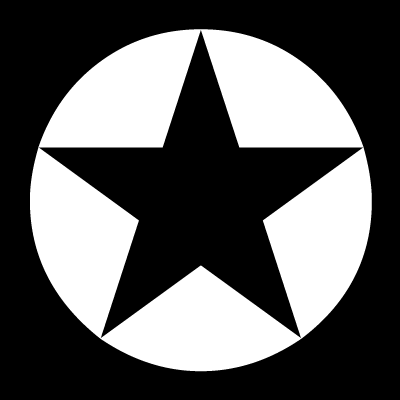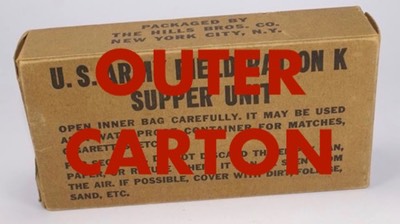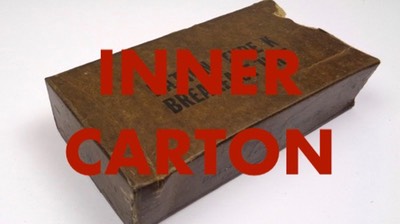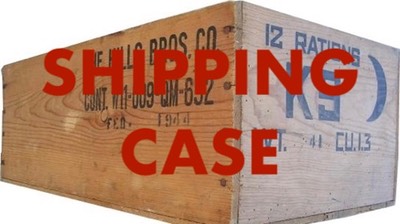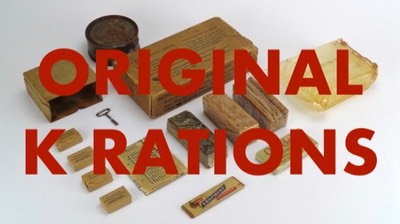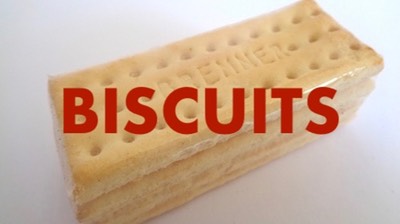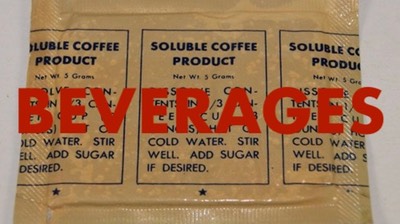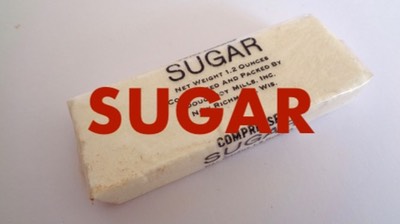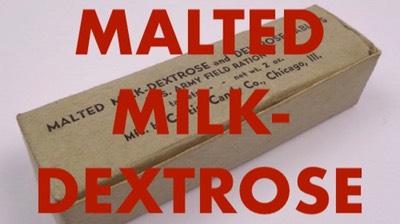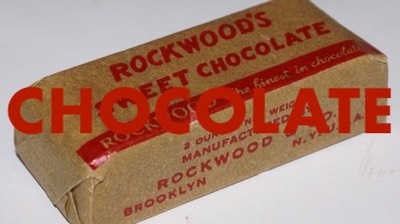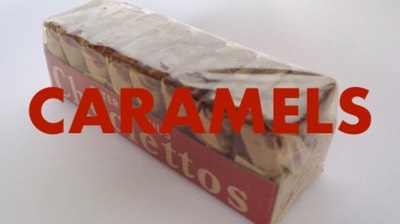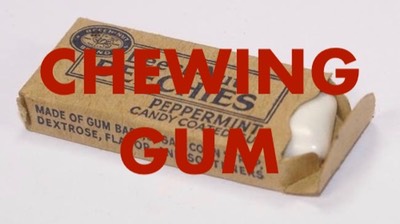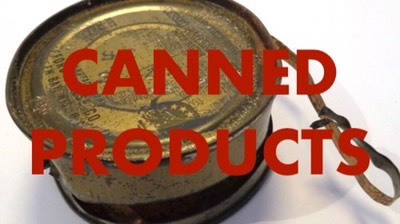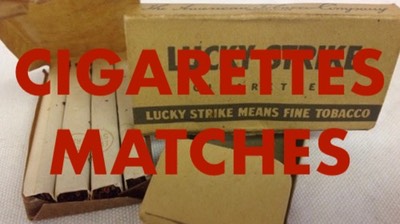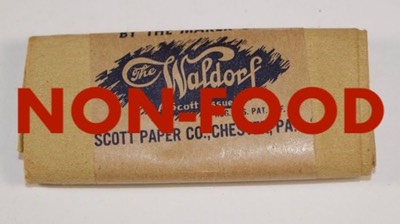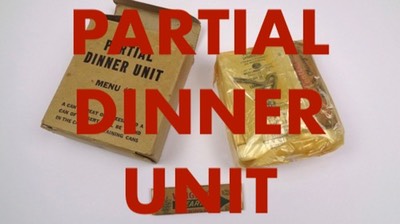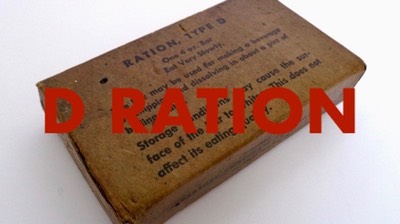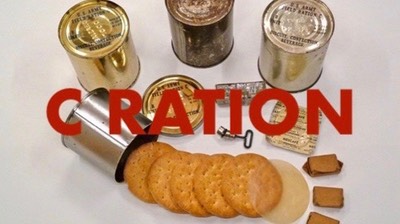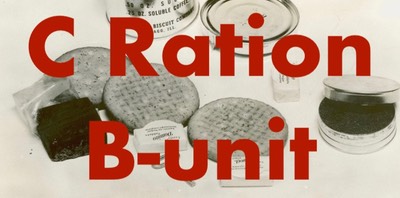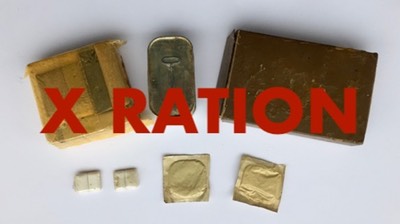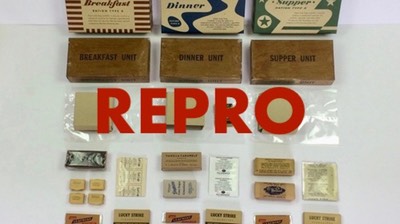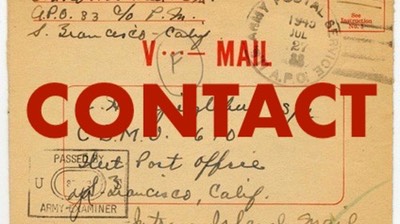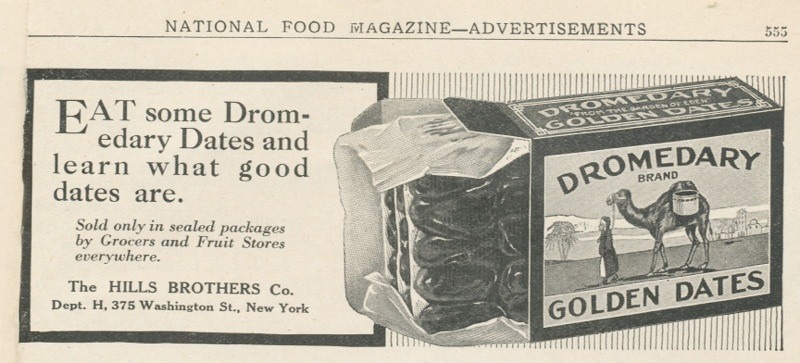
The best liked components […]were the cigarettes, chewing gum and the fruit bar.
The K Ration was a condensed ration and as a result the body produced little waste. This constipation worried most soldiers. It was suggested that a 2-ounce bar of mixed dried fruits could remedy this. Besides the natural fibers it could also be a source of vitamins.
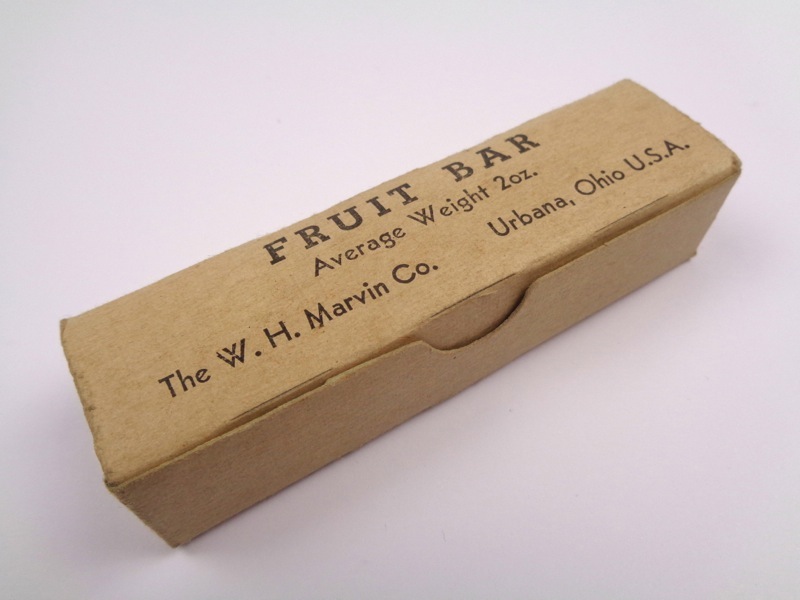
An early Fruit Bar cardboard box (note the tuck-end flap along the lenght of the box) from a 1942 Breakfast unit.
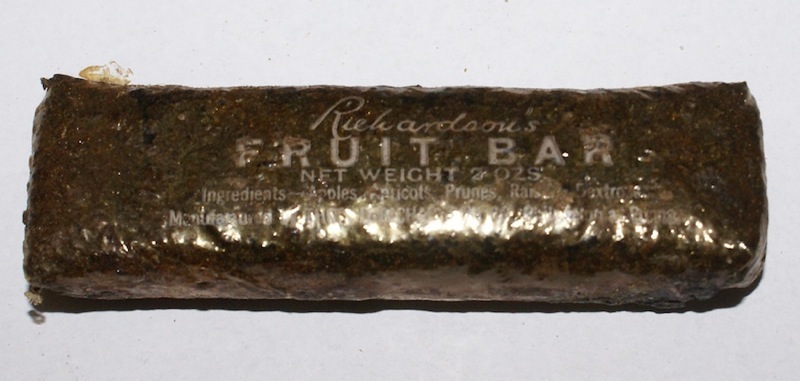
Cellophane wrapped Fruit Bar made by Rickardson from a 1942 Breakfast unit. (photo: 1944Supply)
Insert below: A Rickardson Fruit Bar packaged in a box from a Mountain Ration.
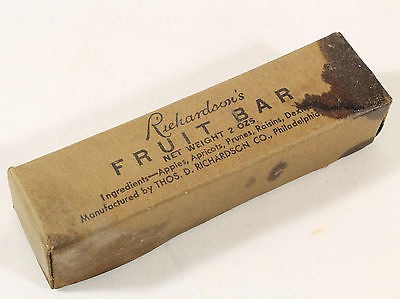
The least popular confection were the dextrose tablets in the Dinner unit. In the spring of 1942 2-ounce fruit bar replaced the dextrose tablets in the Dinner unit. Soon after its introduction the fruitbar was moved to the Breakfast unit and the package of Malted Milk-Dextrose and Dextrose Tablets was placed in the Dinner unit.
The size of the early fruit bar was 3 15/16 x 1 1/8 x 7/8 inch. The lenght of the package protruded past the biscuits and sometimes caused the cellophane bag to crack. In March of 1943 the dimensions of the confections were changed and the fruit bar should be not bigger than 3 1/8 x 1 5/16 x 13/16 inch.

The early 3 15/16 inch long fruit bar made by Dromedary. (photo found on the internet)
The first dried fruits used for this bar were dates. The Dromedary Fruit Bar, a brand of the Hills Brothers Co., had years of experience in importing dates from Africa and were the obvious choice for producing this fruit bar. Later a formula of mixed fruits was developed. This mix consisted of at least 10% apricot and a mix of some or all of the following: apple, prunes, raisins, peaches, figs, pears, dates, cherries, currants and candied orange peel. Sugar, corn syrup and salt could be added for flavor.
Both the date and mixed fruit bars were labeled as Fruit Bar. An all apricot or raisins fruit bar was also developed, but was used only in the Mountain Ration.
Specifications calls for two methods of packaging.
The first method is wrapping the fruitbar with waxed glassine and then placing the bar in a cardboard tray, or, placed directly in a wax treated cardboard tray. Then the tray (with the bar in it) is overwrapped in cellophane and pasteurized. After cooling it is overwrapped again with cellophane.

Late fruit bar of 3 1/8 inch length. This fruit bar, made by the Hills Brothers Co., is placed in a tray of which can be just seen the rounded corners and the name "Dromedary Fruit Bar" printed on the side.
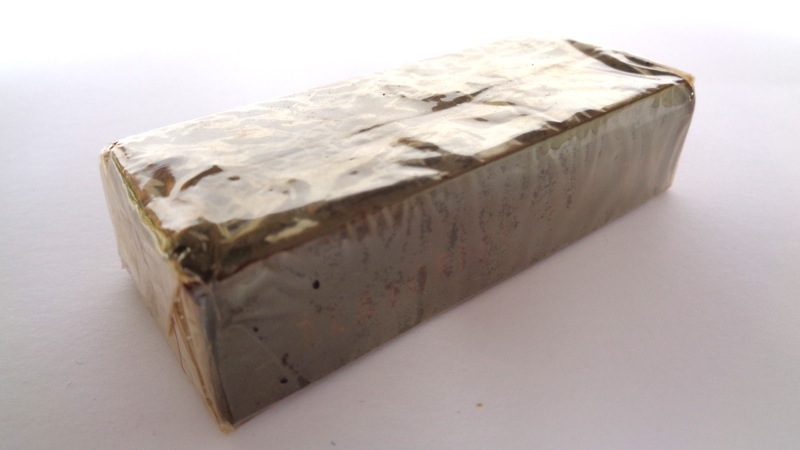
Another late war fruit bar, made by The Fruit Concentrate Co., Fresco, Cal.
The sides are marked: Flavorful Fruit Bar.
This is the prevelant packaging I have encountered so far with the shorter confections in the K Ration. (This method is also used when the fruit bar was included in the Partial Dinner Unit #4 and #5 of the early 10-in-1 ration.) The tray was printed on the sides with the name of the producer and the packagers company and weight on the bottom.
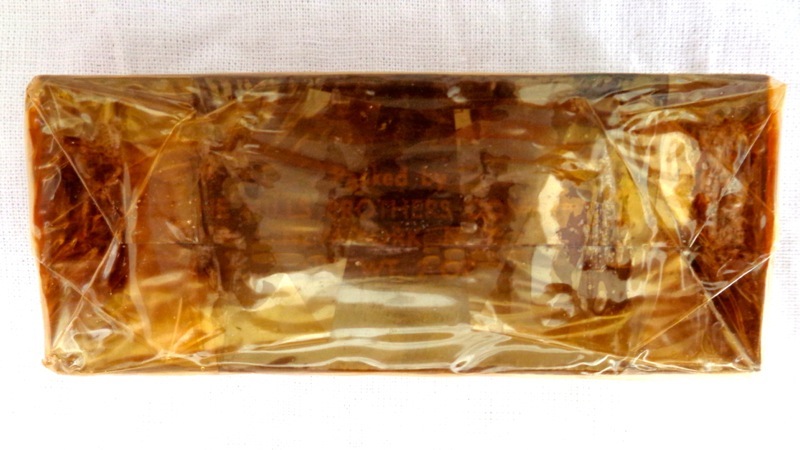
With the double wrapping of cellophane of the Dromedary fruit bar it's hard to make out the printing on the bottom. It says: Packed by The Hills Brothers Company, New York, N.Y. Net wt 2 oz.
The second method was wrapping the fruit bar with cellophane and then placing the bar in a cardboard tuck-end or seal-end box. The box bears the name of the product and its netto weight (2-ounce) and the name of the manufacturer and the packager. This box with the fruitbar in it was then pasteurized and after cooling overwrapped with cellophane.
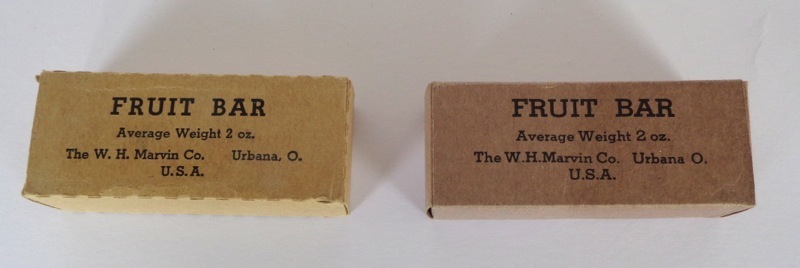
Two different styles of tuck-end boxes as used by the W.M. Marvin Co. This type of packaging was usually found with the 10-in-1 Ration when issued as the dessert for use with the supper meal.
So far I have only seen this type of packaging used in a midwar K Ration packaged by Phillips Packaging Co. and another one packaged by the Cracker Jack Co.
This second method is usually found in the 10-in-1 Ration when the fruitbar is issued as a seperate confection with the supper meal as a dessert.
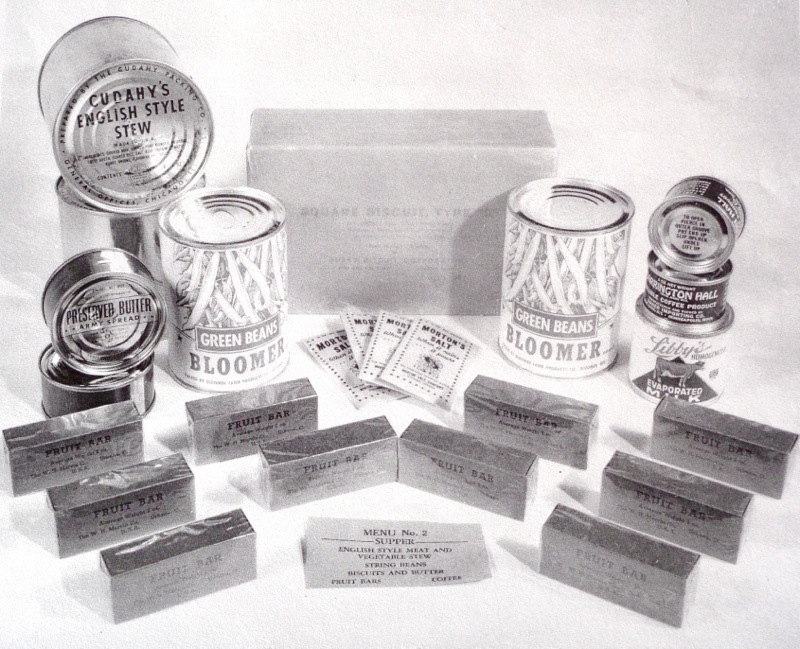
The Supper of the early 10-in-1 Ration, menu #2, included the boxed fruit bar as a dessert.
The GI's believed that the Army used sulphite in the rations and chemically purified water to lower their sexdrive and, as a result, leaves them impotent. However, the use of sulphite or other chemicals as a preservative for the dried fruit, according to the specifications, was not allowed. Only pasteurization was used.
During tests the mixed fruit bar proved to be one of the most popular items included in the K Ration and was retained in the ration unaltered throughout its career.
For a short while a 1-ounce fruitbar was included in the Parachute Ration. (An emergency ration carried by flying personnel, not to be confused with the early unofficial name for the K ration.)
This was basicly a 2-ounce bar cut in half, and was packed in a short cardboard tray overwrapped with cellophane. This canned emergency ration was soon after its introduction replaced with the Parachute Emergency Ration in which the 1-ounce fruit bar was deleted.
The 1-ounce fruit bar is circled in red.
